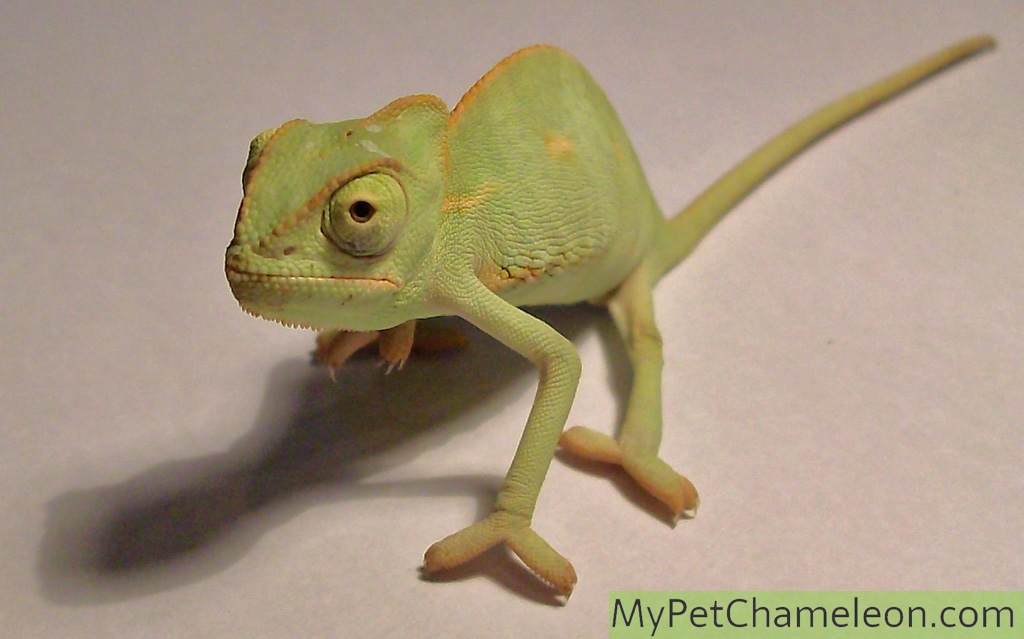
So, you decided you want to have your own pet chameleon. Good for you! Now it is important to choose the right chameleon for you and make sure you get a healthy chameleon. No one wants to deal with a sick chameleon right of the bat. It’s also good to get a chameleon species that suits your wishes and fits in the space you have for it. A big species needs a lot bigger terrarium than a dwarf chameleon. Use this buying checklist to help guide your choices.
What species of chameleon should you buy?
There are many species of chameleon that are kept as pets. The most common ones are Veiled Chameleons (Chamaeleo calyptratus) and Panther Chameleons (Furcifer pardalis). Pygmy chameleons are also kept as pets. There are many differences between chameleon species, for example in the size of the terrarium, amount of food it needs, necessary air humidity and temperature. Some species are also pretty hard to keep as they need a special diet or cannot handle too much changes in temperature or humidity.
Get some information on the different species of chameleon that are available to you. Your choice should be based on your personal preferences, your experience and what you can offer the animals. Veiled chameleons are generally seen as easier to keep than most other species. Panther chameleons are a lot harder to keep healthy. My sugestion is that if you are unfamiliar with reptile ownership and care you should go for a veiled chameleon (Chamaeleo calyptratus).
Is the chameleon you are planning to buy healthy?
You should always buy a healthy chameleon. If the chameleon is sick when you buy it, you will have a bad start with it. You should check for the following aspects in the chameleon you are planning to buy:
- Not skinny
- No missing nails
- Straith legs and the chameleon is standing on all four of them
- Large enough crest (“casque”) for its age
- Open eyes, free from extra fluid
- Closed mouth when calm
- No old skin
- Bright clear colors
To see the complete list of traits of a healthy chameleon, check out our page Signs of a healthy chameleon.
If you choose to rescue a chameleon that was treated badly it is a different story. Don’t pay to rescue a chameleon, especially not from a pet shop. The shop will use your money to continue to buy and sell chameleons that will be treated badly.

Is the chameleon kept in a good environment?
When you go to a breeder, pet shop or private seller of a chameleon, you have the change to see the place where they kept it. Its terrarium, the lights used and maybe even the feeder insects that it was fed. This will tell you a lot about how the chameleon was raised or kept. It will tell you a lot about your future pets health, as a owner that is experienced and has given your future chameleon good care will often sell healthy and strong chameleons.
If there are more chameleons at the pet shop, breeder or seller you should also check if any of them look sick. One sick animal could have already spread its disease to your future pet chameleon, even if it seems without symptoms at the moment. If some have developmental problems or other problems it could mean that the chameleon you are buying could have or develop similar problems.
When in doubt, do not decide on the spot. Give yourself time to think about it instead of buying the chameleon anyway. It is very important that your pet is healthy from the start, because it is already hard to keep it healthy if you have no experience, and then to try to improve the damage done by a bad start could be too hard.

What age should the chameleon that I buy have?
A baby chameleon is harder to care for then one that is a bit older. A baby is weaker, requires special food and is more sensitive to changes in temperature and humidity. Especially when you are not experienced with chameleons I recommend getting a baby chameleon that is 3 months old or older. Those are still small and cute, but not as vulnerable as the really young babies.
A veiled chameleon does not get as old as many other pets, they on average reach the age of 3 to 6 years. There are veiled chameleons that have reached the age of 9 or 10 years, but those are exceptions. Females tend not to grow as old as males, as females use a lot of energy in egg laying. When you buy a chameleon that is 2 or 3 years old, you must realize that it could be already over half of its life span. Especially when it is female or it has not been cared for well, you could have it only shortly as your pet.

